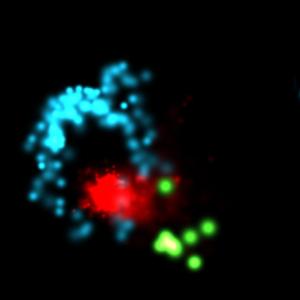New Tool Improves Detection of Extracellular Vesicles
17 Sept 2025
A research team around Thomas Brocker and Jan Kranich has now developed a novel high-affinity reagent.
17 Sept 2025
A research team around Thomas Brocker and Jan Kranich has now developed a novel high-affinity reagent.

© Brocker Lab / BMC
Extracellular vesicles (EVs) are tiny particles released by cells that play an important role in communication between tissues. They are increasingly seen as potential biomarkers and even therapeutic tools. Over the past two decades, EV research has expanded rapidly, revealing their roles in physiological and pathological processes, as well as their potential as cargo-delivery systems in therapy. However, their diversity has made it difficult to detect and classify them reliably – a challenge that has limited their clinical use.
A research team around Prof Thomas Brocker and Dr Jan Kranich have developed a novel phosphatidylserine (PS)-binding reagent to improve EV detection and analysis. While PS is well known as a marker of dying cells and activated platelets, its presence on EVs has long been debated. By systematically comparing different PS-binding reagents, the researchers demonstrated that around 90% of EVs in human and mouse blood display PS.
With the new reagent, the team and their collaborators were also able to study EV turnover in living organisms for the first time. Their results show that PS-positive EVs in mouse blood are rapidly removed from circulation – about half disappear within 30 minutes – but can remain attached to immune cells in the spleen.
The study provides unprecedented detail showing that most EVs in vivo are PS-positive, enabling their targeted tracking for turnover analysis. This novel reagent also opens new avenues for investigating EV biogenesis, function, and behaviour, as well as monitoring therapeutically applied EVs. Given the growing interest in EVs across biomedical fields, this work delivers a critical tool for advancing both basic research and translational applications.
Publikation: Lavinia Flaskamp et al.: Assessing Extracellular Vesicle Turnover In Vivo Using Highly Sensitive Phosphatidylserine-Binding Reagents. Advanced Science, August 2025